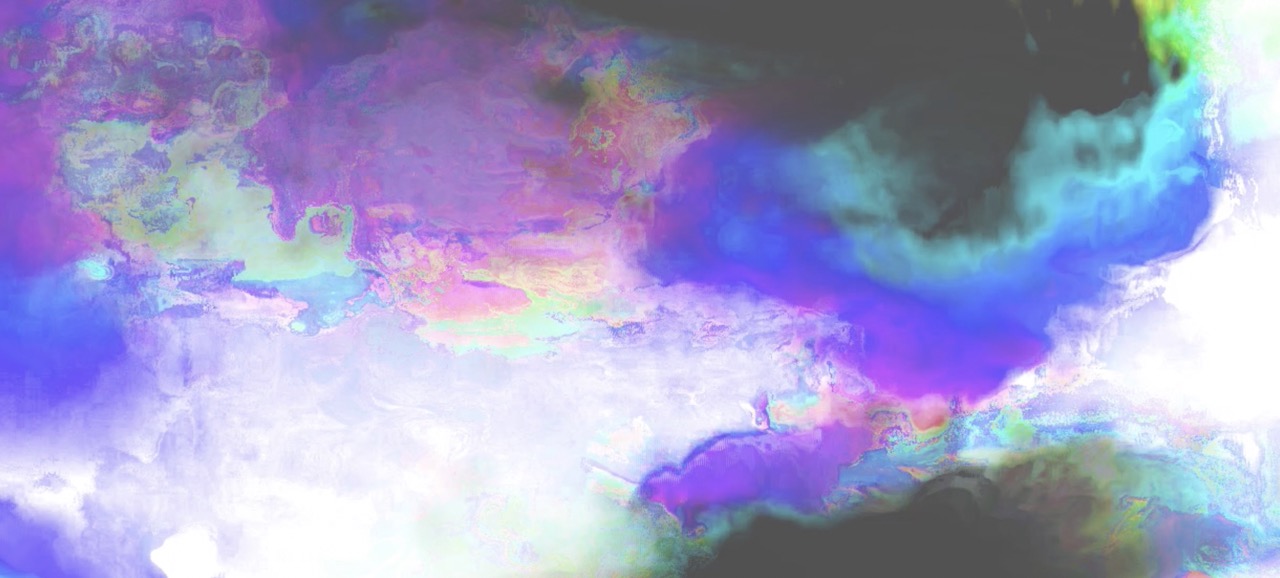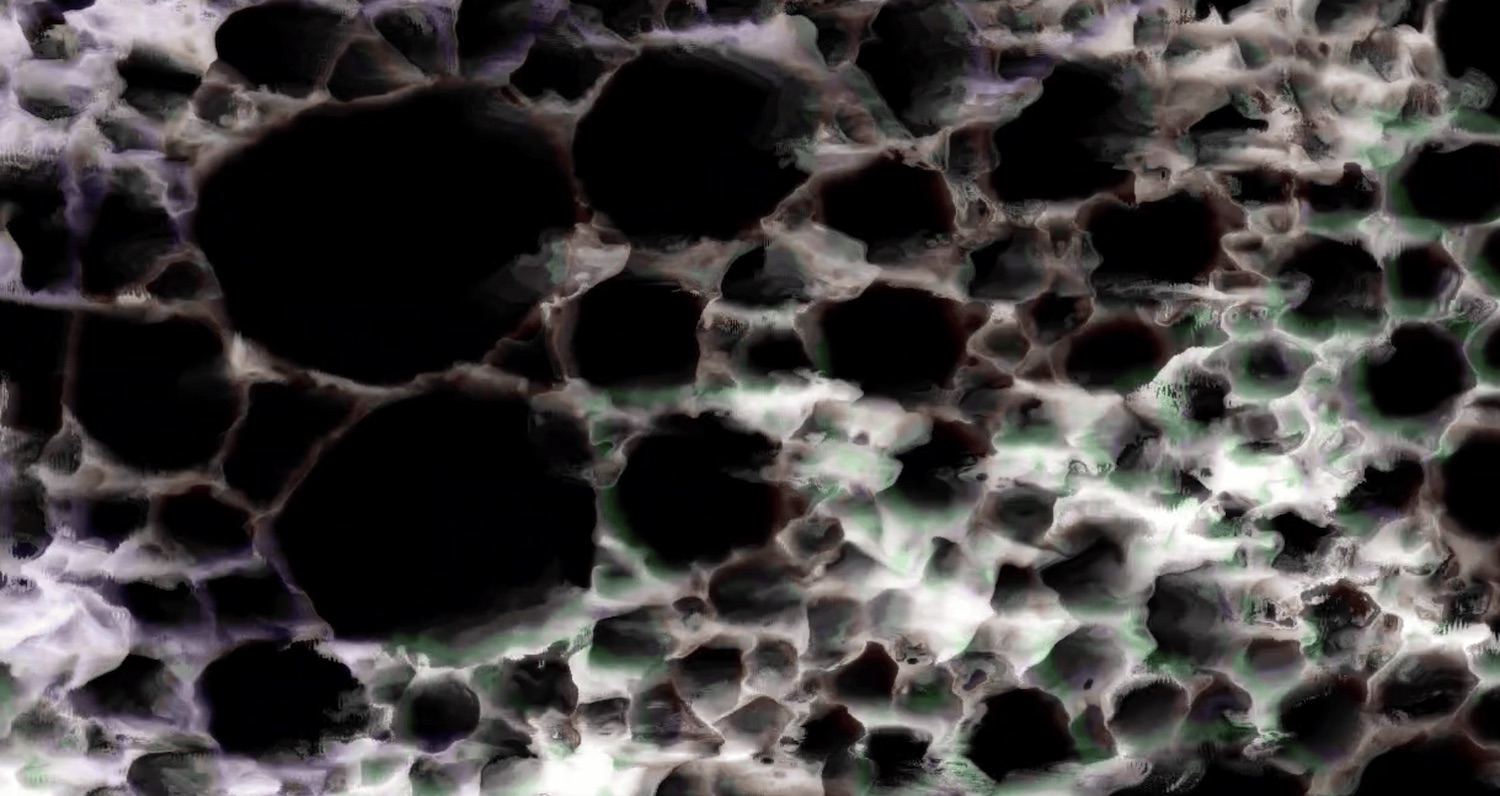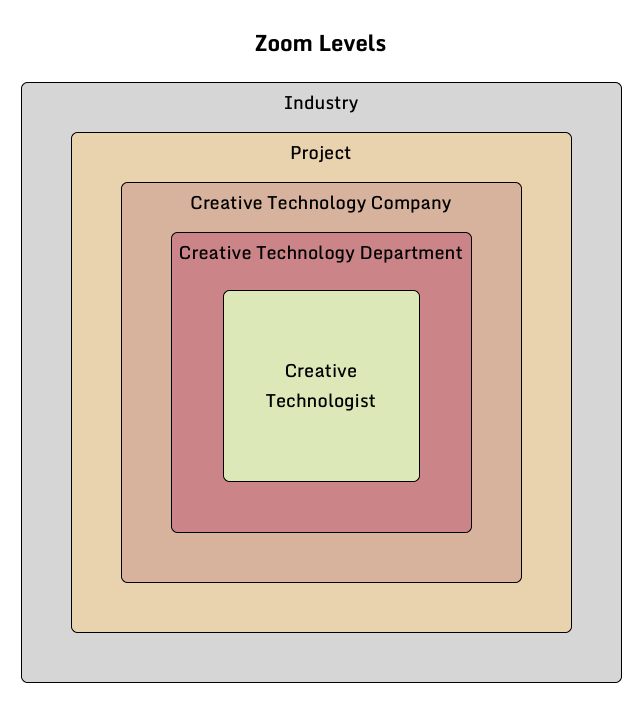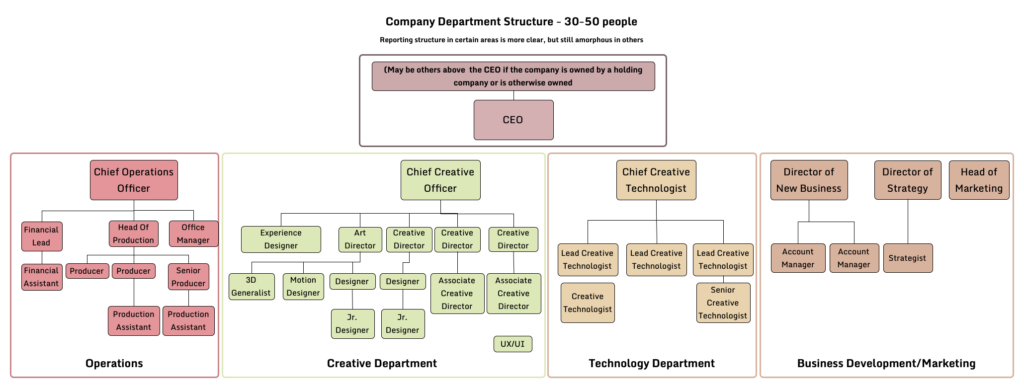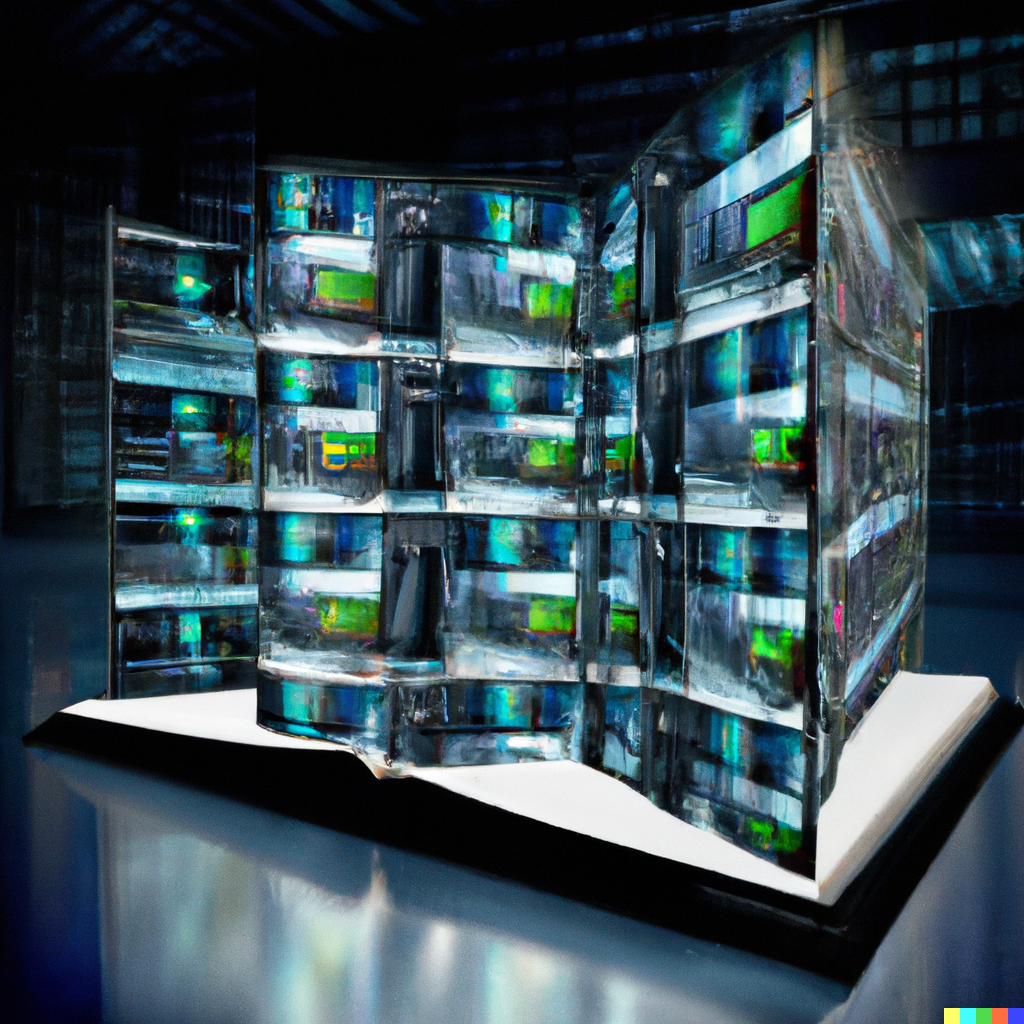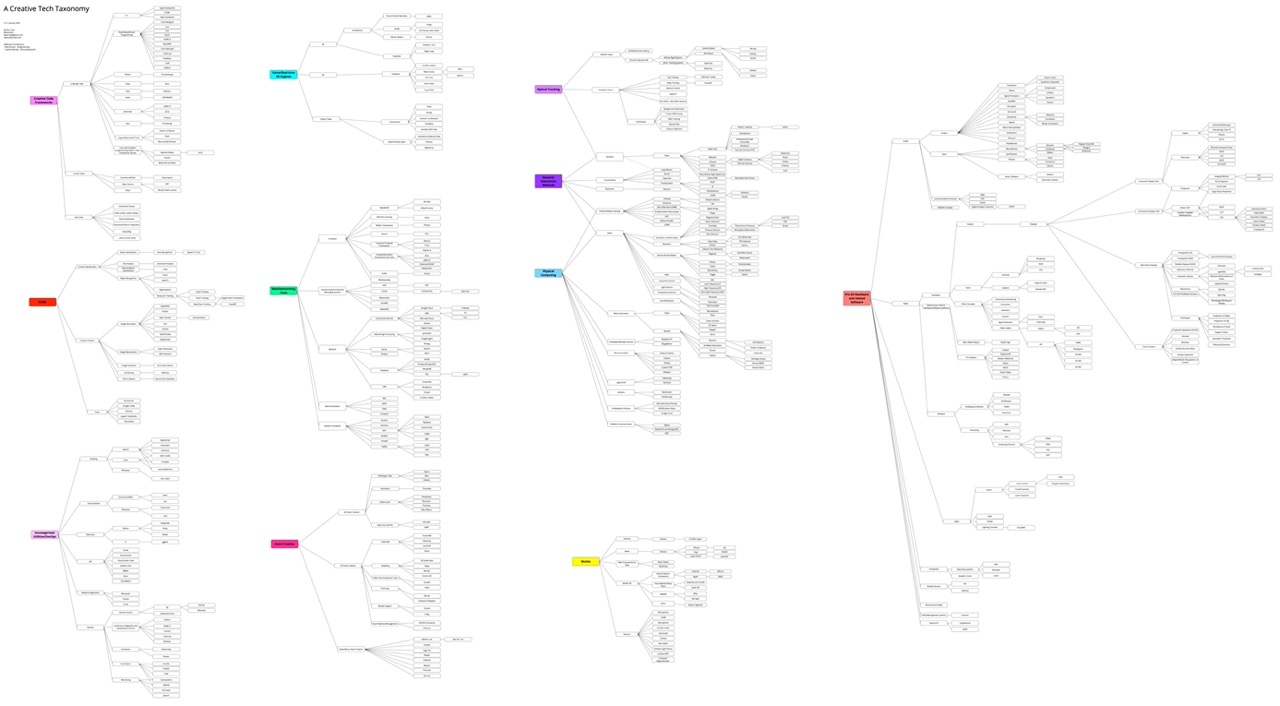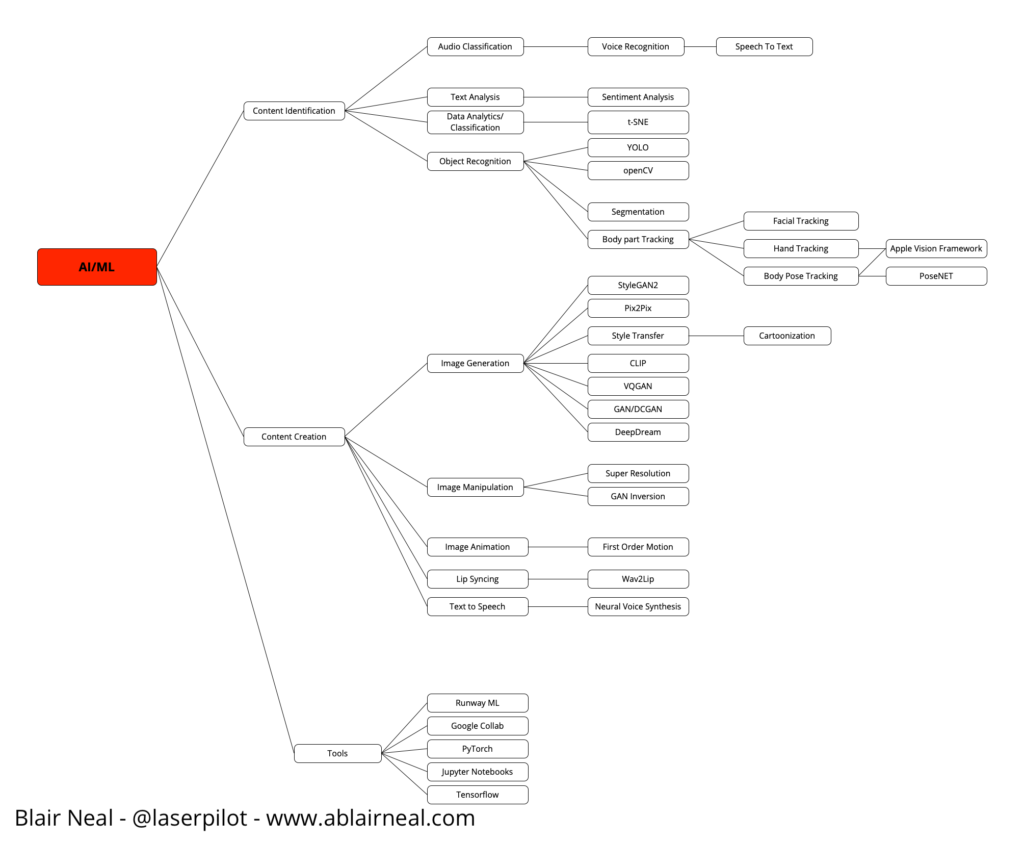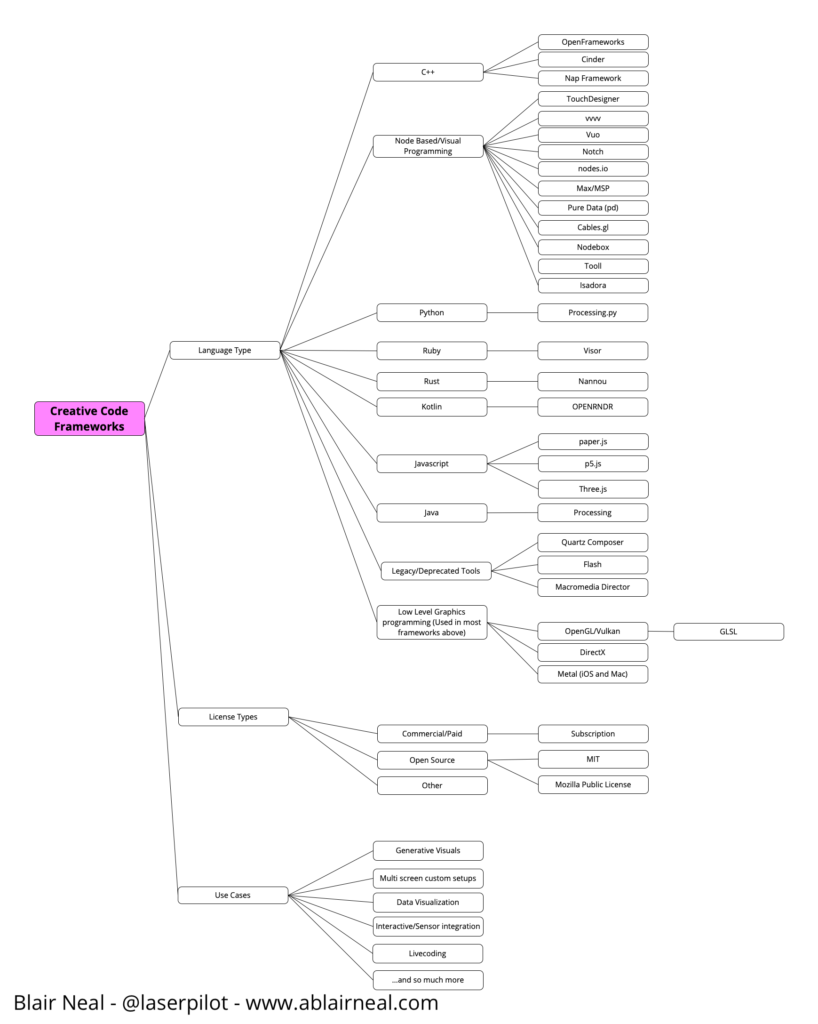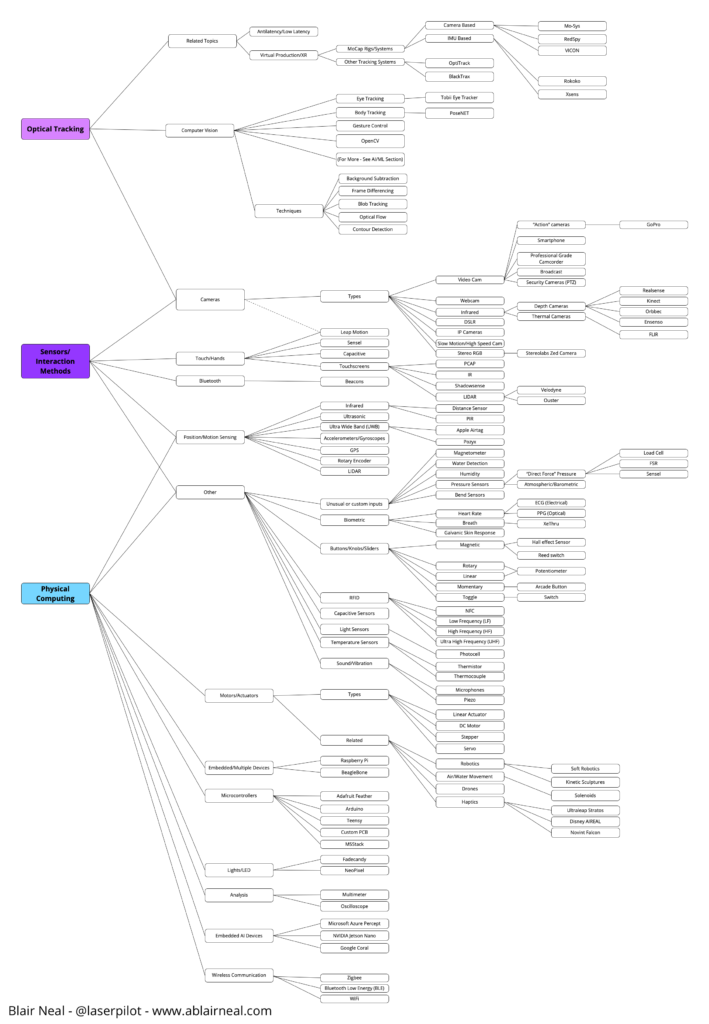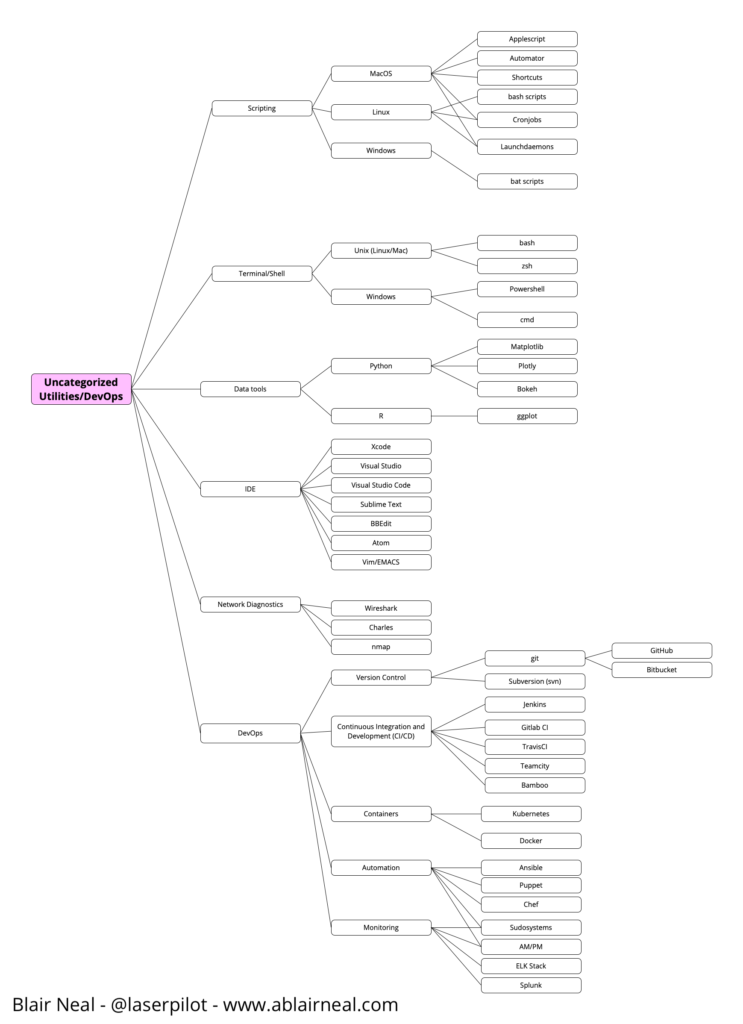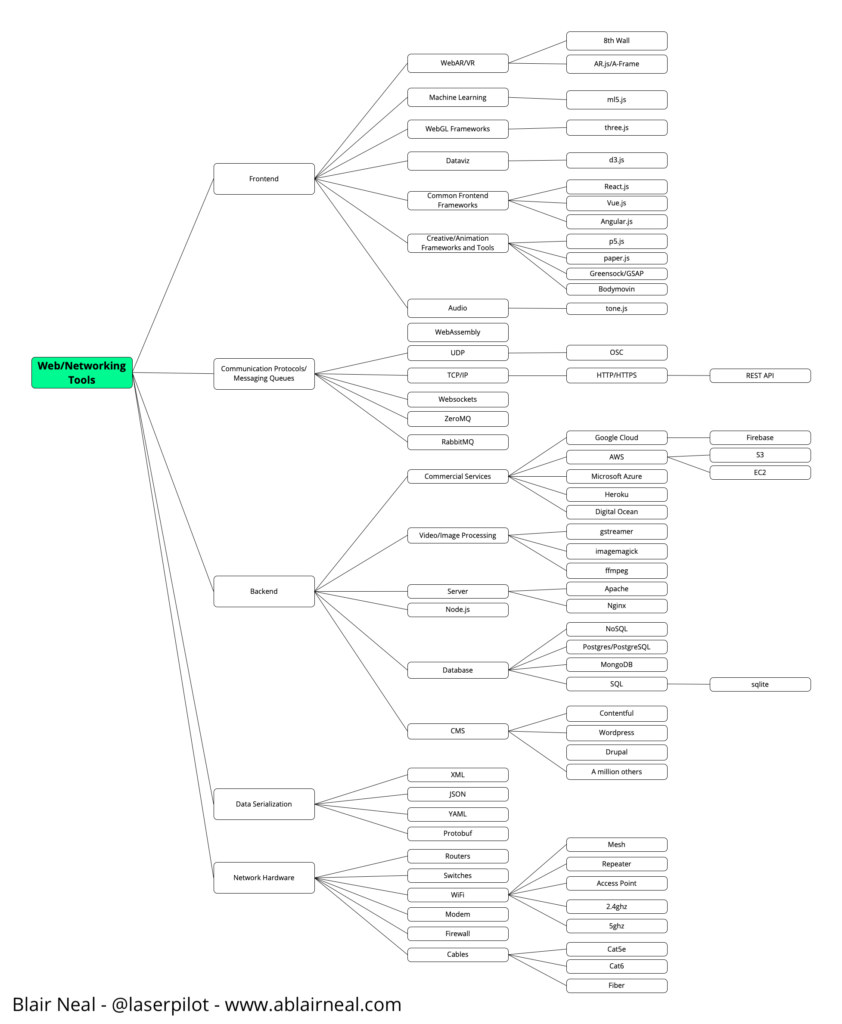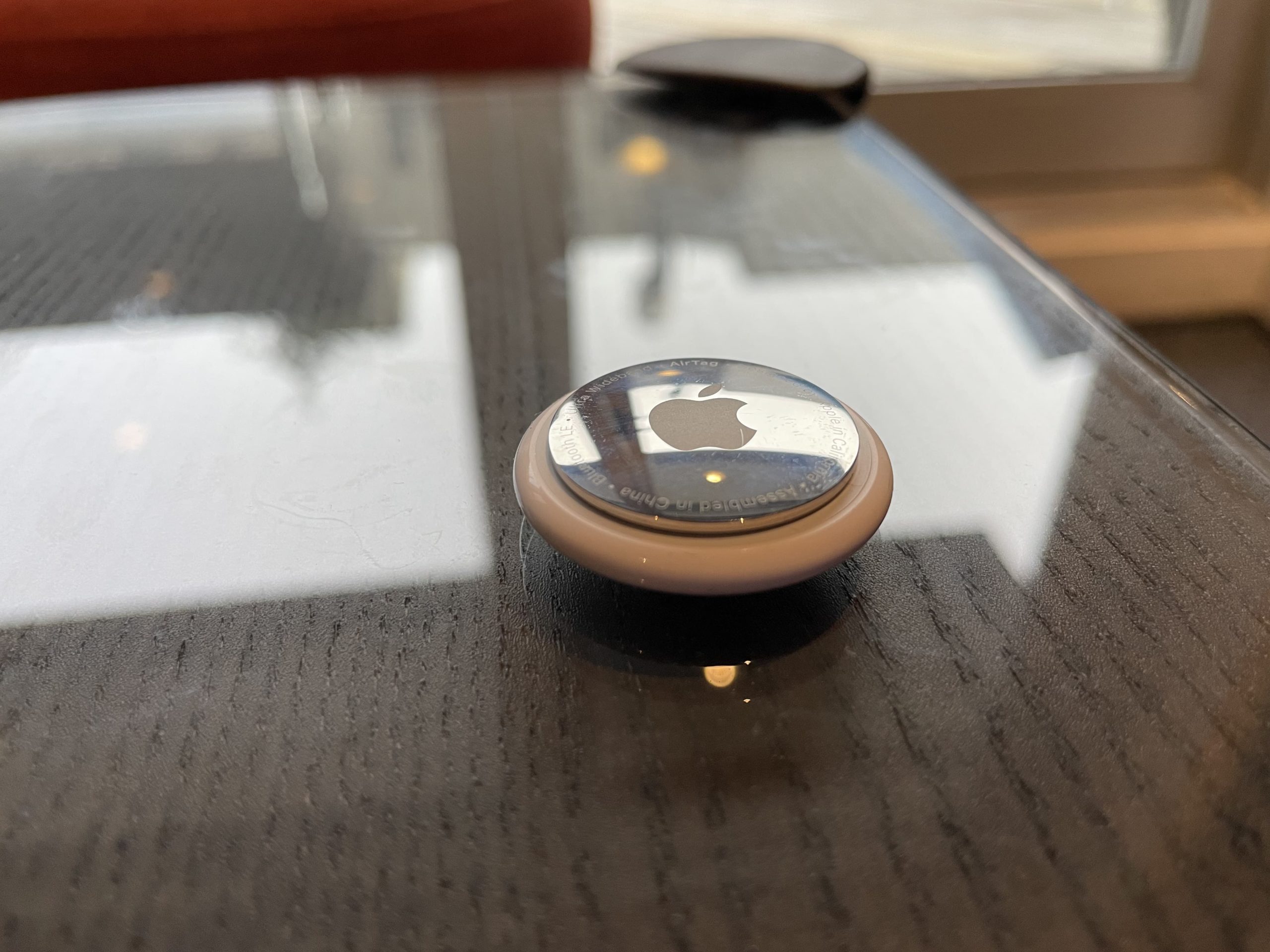This is a sort of continuation on my essays on creative tech and organizational structures, but could easily be considered its own thing.
My previous essays on this topic focused more on projects and clients and their impact on the working process. This essay discusses the broader ecosystems connected to the tools used in creative technology and experience design, tools that the industry relies on to make their work. Understanding the origins of these tools can provide valuable insights for teams working on experience design and creative tech projects.
Consider the chart below which is a sort of high level map of how I think about the “sources” of the tools used by creative technologists.
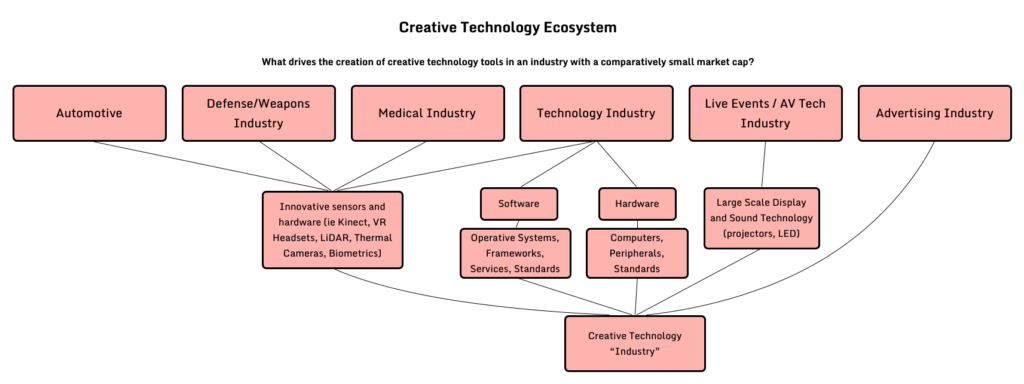
When we compare creative technology and experience design to other industries, it becomes clear that it is relatively small. How many experience design companies focus on creative technology as a core competency? How many projects to they handle annually and what are their revenues and number of employees? Despite some projects gaining significant media attention, the financial impact of creative technology remains modest compared to other sectors. Consequently, many tools used in creative tech are adapted from technologies developed for much larger industries.
Why is this important? Consider a technology like the well known depth camera, the Microsoft Kinect. The Kinect is old and essentially deprecated, but stick with me. This tool was launched in late November 2010 for the Xbox 360, a gaming console for consumers. The tech has origins from Israel's PrimeSense, and then Microsoft acquired them and moved the tech towards gaming applications. This research and development took years, and likely hundreds of millions of dollars. The original Kinect sold very well to consumers (over 8 million units. Additionally, despite the fact that the tool wasn't explicitly made for the creative technology communities, the Kinect also eventually began to get a foothold as a new sensing technology for use in interactive digital experiences. It was everywhere for a while, and we can still feel echoes of the "wave your arms at a wall of particles" projects popularized by the Kinect even today.
Now let’s consider a hypothetical case of direct impact of the creative technology community actually buying that tech.
Let’s (generously) say there are 500 companies in the US doing creative technology projects in a given year. Of those companies, maybe Kinect projects are really hot right now, and they have 3 projects each that year that all use 5 Kinect's per project (so 7500 Kinects across all companies). At $200 a pop ($400 for the Azure Kinect), that brings the grand total of Microsoft's take to something like $1.5 Million for 7500 Kinects - an optimistic estimate and a slim percentage of the total 8 million units sold. While these projects might enhance the Kinect's visibility and perceived value, $1.5 Million is insignificant compared to the consumer market and other industries. On top of that, many of these large tech companies occasionally take on these projects not as a profit-making venture, but almost more as an intensive abstract marketing effort - make a "cool" technology that can be used in a really "cool" project and attach Microsoft, Intel, Google, or Apple onto it. Consumers may not go out and buy a Realsense camera, but they might remember that Intel does "cool" stuff like that. See also, the concept of a loss leader (the Kinect 2 was reportedly sold at a loss).
So if all of these technologies aren't being made for "us", the creative technologists - who are they for? Well, there is the consumer market, there is the defense and weapons industry (remember how Hololens got a $22B contract with the military?), there is the medical industry (see Google Glass Enterprise), and a lot of other high profile and well funded industries. And I'm mostly talking about the high profile sensor technologies that a lot of us use - there is a whole other side to this in large scale AV technology like LED walls, computers, microcontrollers, etc etc. Supply and demand still mostly rules here. Below is just a partial list of tools or frameworks and either their original “funder” or what I would assume is a primary industry for that piece of tech:
- Defense/Military
- Depth Cameras
- Infrared and Heat Sensing
- Headset displays for VR and AR
- GPS
- Retail:
- RFID/NFC
- Touchscreens
- "Digital Signage"
- Automotive and Manufacturing
- Computer vision
- Various sensors (pressure, distance, etc)
- Robotics
- LIDAR
- Entertainment (professional and consumer)
- Video and display standards
- Cameras, connectors and lenses
- Audio equipment and standards
- Displays, Projectors and LED
- Medical
- Heart rate sensing
*Caveat that the above points are based on observations and not detailed research
Since these technologies aren't usually designed specifically for creative technologists, the discipline must get really good at adaptive reuse. A key skill for a generalist creative tech is to be able to see through the noise of the tech landscape and make recommendations about what will and won’t work - a lighthouse in the fog. We’re sifting through other industries to find tools that enable new creative capabilities and methods of expression. However, to my point above, creative tech can be a small voice to direct change in those technologies.
The idea of adaptive reuse gets at the heart as to why working on creative technology projects can feel either exciting or truly challenging. We're often using and bolting on tools that weren't designed for the purpose we're using them for. They are often tools that were profitable enough to be produced at a high volume for a broad set of purposes (or one specific case). This is certainly nothing new to the world of creativity or working in general, but it does answer some important questions that come up over and over.
Creative Tech people may know what we want or need in a sensor, or a depth camera (higher frame rate! high resolution!), a computer, a software tool, but there may never be something that gets released that is just the right fit - so we make it work. For people reading this that might be more non-technical, I think a key takeaway is allowing for some grace when things don’t work as intended.
So with all of the above and the challenges of a broader ecosystem, how can organizations be more responsive and less reactive to tech trends? What sorts of technologies can the creative tech space have greater influence over or is the only option to try and make your own product and hope you can recoup the costs? This topic is a meaty one meant for its own separate writeup, but at a high level I think that things like creating room and curiosity for prototypes and research both inside and outside of projects can be a huge help. Having an awareness and sensitivity to the forces at play outside of the creative technology and experience design space can be a crucial step to identifying paths forward.
